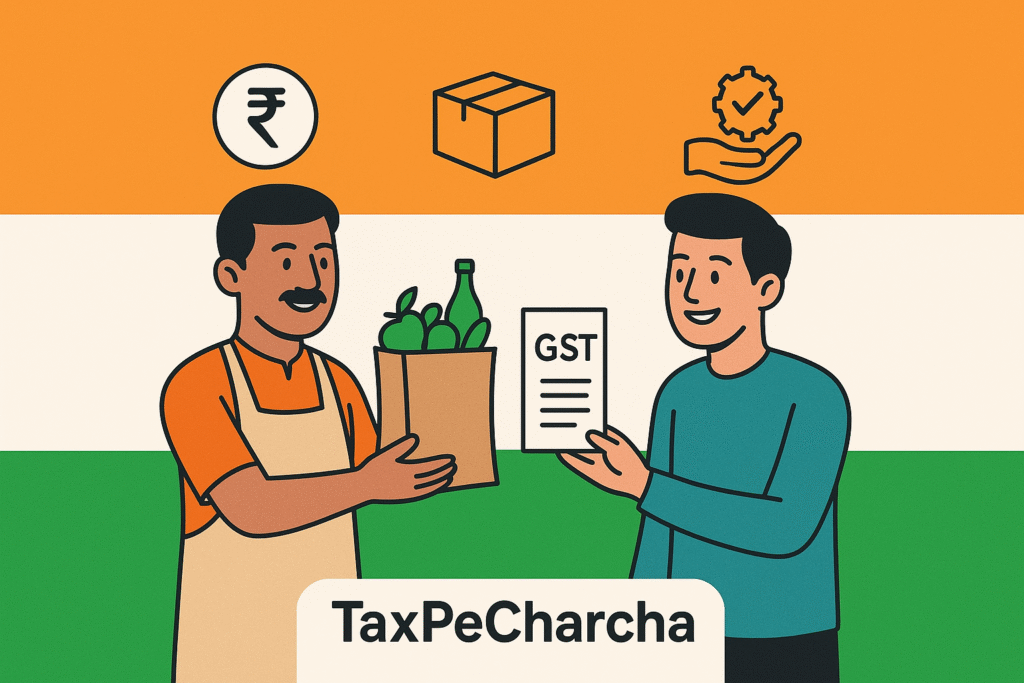Know GST meaning, types, benefits, and rates in India. A simple, complete guide for beginners. Learn how GST works and why it matters.

If you run a business, shop online, or even buy daily essentials, you’ve already paid GST — whether you realise it or not! But what exactly is GST, and why is it so important for India’s economy? In this guide, we’ll explain GST kya hai in simple words, so you can understand its meaning, types, benefits, and how it works.
What is GST?
GST stands for Goods and Services Tax. It is a single, indirect tax that replaced multiple old taxes like VAT, Service Tax, Excise Duty, etc., in India. Introduced on 1st July 2017, GST makes tax collection simpler and uniform across the country.
It is a destination-based tax — meaning it is collected at the place where goods or services are consumed, not where they are produced.
Why GST was Introduced in India
Before GST, businesses had to pay different taxes to state and central governments, which caused confusion and higher costs. GST was introduced to:
Boost transparency in the taxation system
Remove tax-on-tax effect (Cascading Tax)
Simplify compliance with one single tax
Create a unified market across India
Types of GST in India
There are four main types of GST:
- CGST (Central Goods and Services Tax) – Collected by the central government on intra-state sales.
- SGST (State Goods and Services Tax) – Collected by the state government on intra-state sales.
- IGST (Integrated Goods and Services Tax) – Collected by the central government on inter-state sales.
- UTGST (Union Territory Goods and Services Tax) – Collected in Union Territories without a legislature.
GST Tax Rates in India
GST in India has multiple tax slabs depending on the type of goods and services:
- 0% GST – Essential items like fresh fruits, vegetables, milk.
- 5% GST – Essential goods & services like packaged food, transport.
- 12% GST – Processed food, business services.
- 18% GST – Most goods & services like electronics, restaurants.
- 28% GST – Luxury items like cars, tobacco, air conditioners.
How GST Works – Simple Example
Imagine you buy a shirt worth ₹1,000 from a Delhi shop. GST rate is 5%.
- Price of shirt = ₹1,000
- GST @ 5% = ₹50
- Total Price = ₹1,050
The shopkeeper collects ₹50 GST and pays it to the government via the GST portal.
Benefits of GST for Businesses & Consumers
For Businesses:
- Easier compliance with online GST filing
- Seamless flow of input tax credit (ITC)
- No multiple state-level taxes
For Consumers:
- Uniform prices across India
- Reduced hidden taxes
- More transparency in pricing
Who Should Register for GST?
- Any business with annual turnover above ₹40 lakh (₹20 lakh for services)
- E-commerce sellers
- Inter-state suppliers
- Casual taxable persons and agents
GST Return Filing in India
Businesses registered under GST must file regular returns such as:
- GSTR-1 – Outward supplies
- GSTR-3B – Summary return
- Annual Return – GSTR-9
Filing can be done easily online through the GST portal.
FAQs on GST
1. GST kya hai simple words mein?
GST ek single indirect tax hai jo goods aur services par lagta hai, purane multiple taxes ko replace karta hai.
2. GST ka full form kya hai?
GST ka full form hai Goods and Services Tax.
3. GST ke kitne types hote hain?
India mein 4 types hote hain – CGST, SGST, IGST, aur UTGST.
4. GST return kaise file kare?
Aap GST portal par online login karke GSTR-1, GSTR-3B, aur annual return file kar sakte hain.
5. GST se consumer ko kya fayda hai?
Consumer ko ek uniform price milta hai, hidden taxes kam hote hain, aur transparency badhti hai.
Related Blog Suggestions
- GST Registration Process in India – Step by Step Guide
- How to File GST Return Online – Complete Tutorial
- Input Tax Credit in GST – Rules and Benefits Explained
Thank you for reading this guide on GST kya hai. We hope it helped you understand the basics of GST in simple language. For more updates on taxation, finance, and compliance, follow TaxPeCharcha on our website and social media platforms.